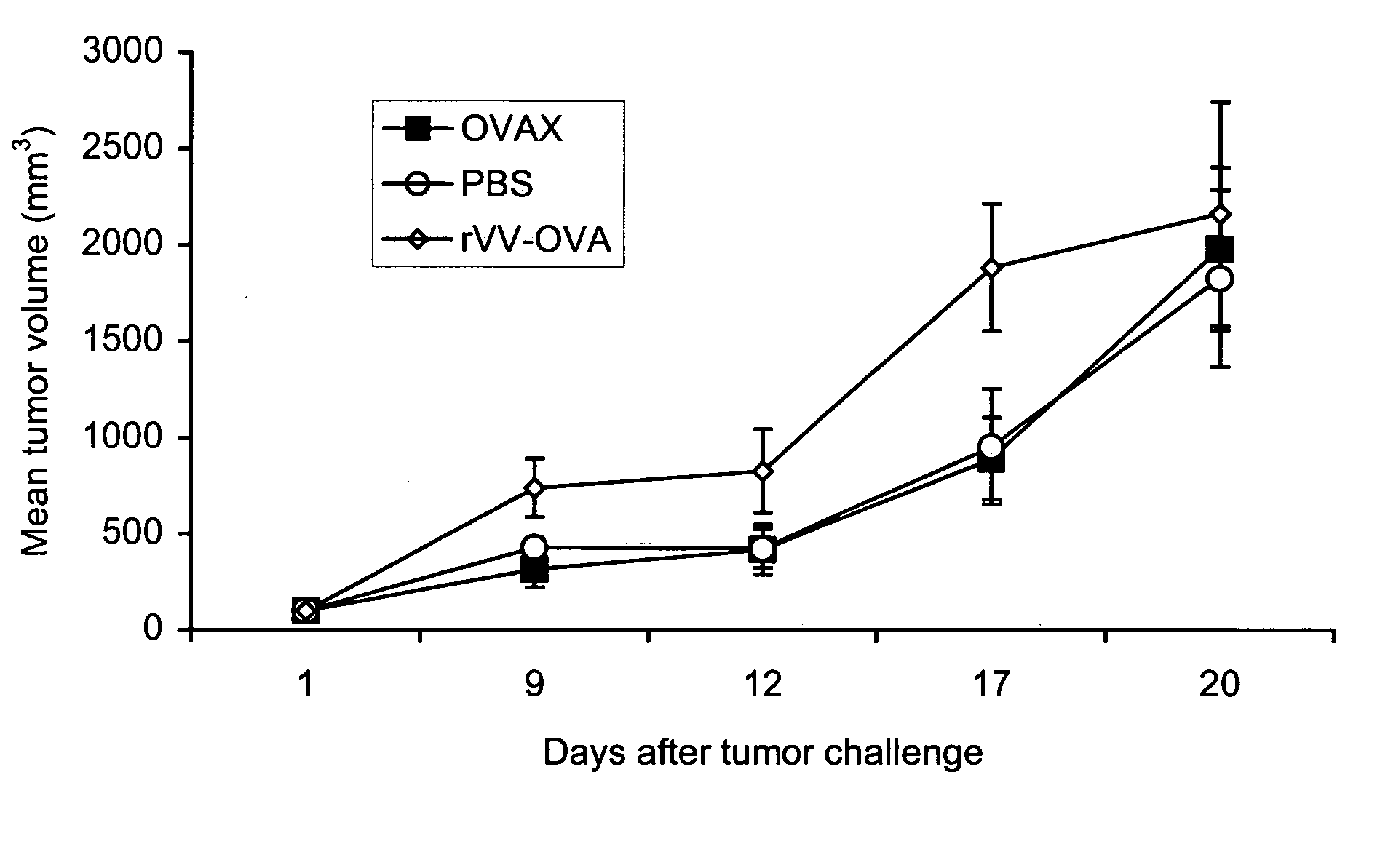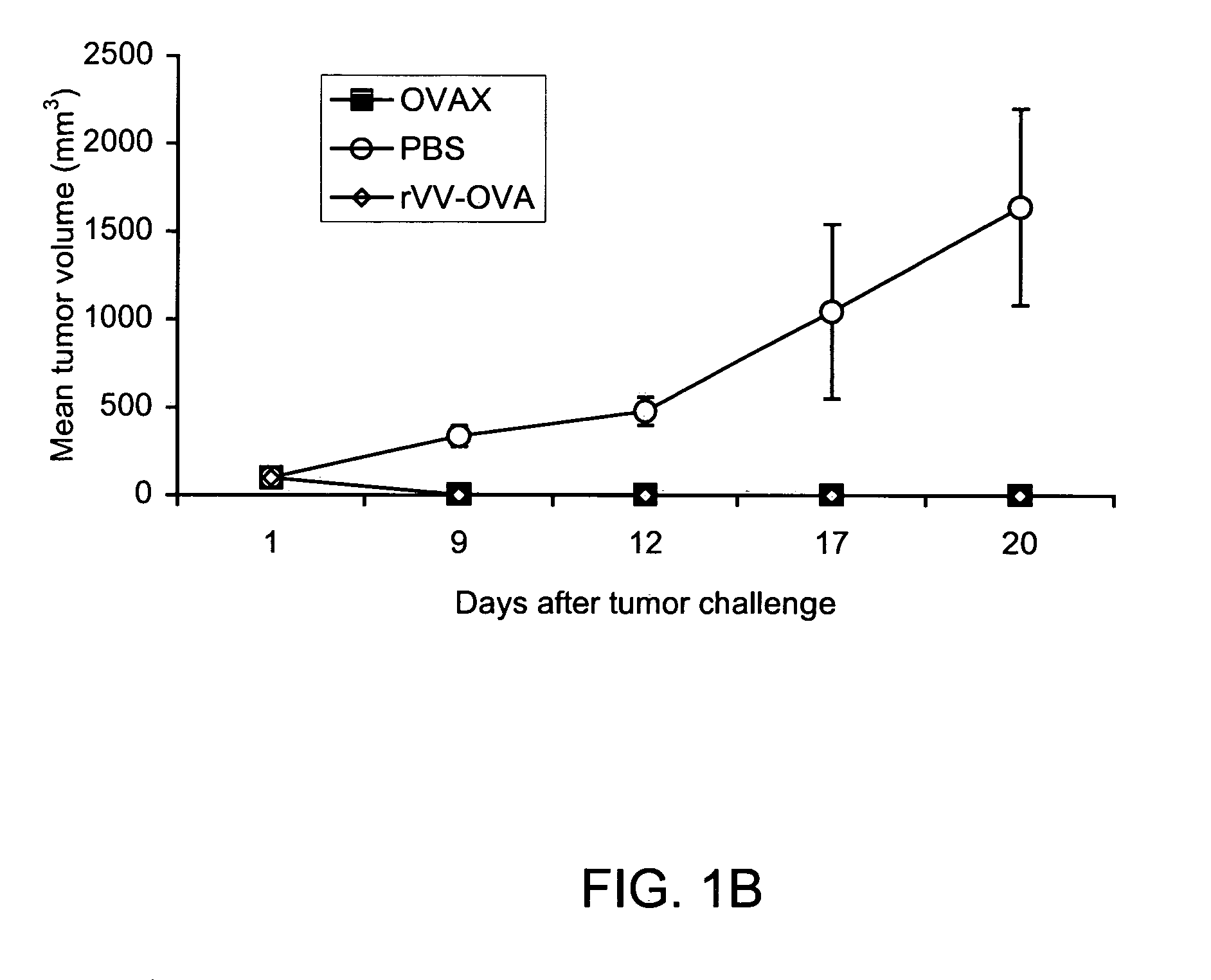Yeast-dendritic cell vaccines and uses thereof
- Summary
- Abstract
- Description
- Claims
- Application Information
AI Technical Summary
Benefits of technology
Problems solved by technology
Method used
Image
Examples
example 1
[0120] The following example shows that vaccination of mice with recombinant yeast expressing chicken ovalbumin (OVAX) protects against challenge with E.G7-OVA lymphoma cells. This example also compares a yeast-based vaccine to recombinant vaccinia virus.
[0121] The E.G7-OVA mouse tumor model has been employed by many groups to test novel vaccine candidates that induce protective CTL responses (Falo et al., Nat Med 1:649-53 (1995); McCabe et al., Cancer Res 55:1741-7 (1995); Brossart et al., J Immunol 158:3270-6 (1997); Cho et al., Nat Biotechnol 18:509-14(2000)). E.G7-OVA are EL-4 lymphoma cells (H-2b) stably transfected with cDNA encoding chicken ovalbumin (Moore et al., Cell 54:777-85 (1988)). To test whether recombinant yeast could trigger protective immunity in this tumor model, Saccharomyces cerevisiae yeast were engineered to express ovalbumin as a heterologous protein. This yeast preparation was named OVAX.
[0122] C57B1 / 6 mice (H-2b) were vaccinated once a week for two weeks...
example 2
[0123] The following example demonstrates that CD8 T cells are required for protection against tumor formation induced by OVAX. This particular experiment also showed that OVAX induces anti-OVA antibody.
[0124] To assess the role of CD8+ CTL function for OVAX-mediated vaccine tumor protection, the study was reproduced in CD8-deficient C57B1 / 6-Cd8atm1Mak (CD8− / −) transgenic knockout mice. As shown in FIG. 1c, E.G7-OVA tumors progressed similarly in OVAX- or mock-immunized CD8− / − mice, although these mice produced antibodies against OVA (data not shown). These results strongly suggest that the protective immunity elicited by the recombinant yeast vaccine in this tumor model was dependent on CD8+ T cell function.
example 3
[0125] The following example (FIG. 1D) shows that vaccination of mice with recombinant yeast expressing HIV gp160 envelope protein induce antigen-specific CTL that are capable of killing virally infected cells that are producing the antigen.
[0126] In brief, BALB / c mice were injected with 2×107 HIVAX-1 yeast, 2×107 YVEC yeast or PBS on days 0, 7 and 14. Mice were sacrificed on day 35 and CTL were restimulated in vitro in the presence of 1×106 heat-killed HIVAX-1 yeast. 5% CAS was added on day 5. CTL were assayed on the indicated target cells. Results are presented as % specific lysis + / − S.D. for triplicate determinations.
[0127] FIGS. 1Ea and 1Eb show that vaccination of mice with recombinant yeast expressing HIV gp160 envelope protein induce antigen-specific T helper cell that are capable of proliferating in response to envelope antigens.
[0128] In brief, BALB / c mice were injected with 2×107 HIVAX-1 yeast, 2×107 YVEC yeast or PBS on days 0, 7 and 14. Mice were sacrificed on day 35...
PUM
| Property | Measurement | Unit |
|---|---|---|
| Composition | aaaaa | aaaaa |
| Biological properties | aaaaa | aaaaa |
| Immunogenicity | aaaaa | aaaaa |
Abstract
Description
Claims
Application Information
 Login to View More
Login to View More - R&D
- Intellectual Property
- Life Sciences
- Materials
- Tech Scout
- Unparalleled Data Quality
- Higher Quality Content
- 60% Fewer Hallucinations
Browse by: Latest US Patents, China's latest patents, Technical Efficacy Thesaurus, Application Domain, Technology Topic, Popular Technical Reports.
© 2025 PatSnap. All rights reserved.Legal|Privacy policy|Modern Slavery Act Transparency Statement|Sitemap|About US| Contact US: help@patsnap.com



